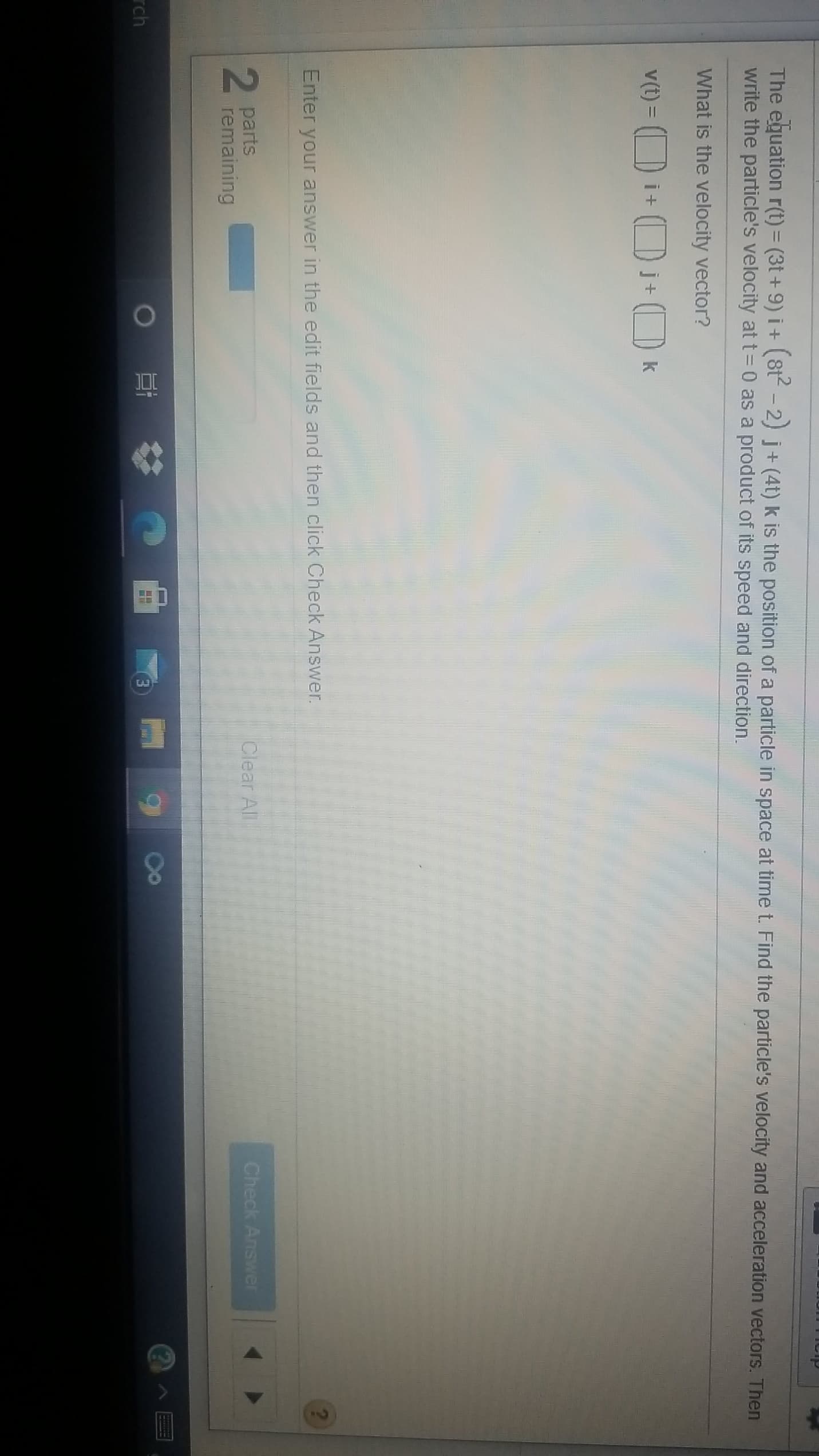The eguation r(t)= (3t+ 9) i + (8t - 2) j+(4t) k is the position of a particle in space at time t. Find the particle's velocity and acceleration vectors. Then write the particle's velocity at t= 0 as a product of its speed and direction. What is the velocity vector? v(t) = (D i+ (Di+ k
The eguation r(t)= (3t+ 9) i + (8t - 2) j+(4t) k is the position of a particle in space at time t. Find the particle's velocity and acceleration vectors. Then write the particle's velocity at t= 0 as a product of its speed and direction. What is the velocity vector? v(t) = (D i+ (Di+ k
Principles of Physics: A Calculus-Based Text
5th Edition
ISBN:9781133104261
Author:Raymond A. Serway, John W. Jewett
Publisher:Raymond A. Serway, John W. Jewett
Chapter3: Motion In Two Dimensions
Section: Chapter Questions
Problem 3OQ: Figure OQ3.3 shows a birds-eye view of a car going around a highway curve. As the car moves from...
Related questions
Concept explainers
Topic Video
Question

Transcribed Image Text:The eguation r(t)= (3t+ 9) i + (8t - 2) j+(4t) k is the position of a particle in space at time t. Find the particle's velocity and acceleration vectors. Then
write the particle's velocity at t= 0 as a product of its speed and direction.
What is the velocity vector?
v(t) = (D i+ (Di+ k
Expert Solution
Step 1
Introduction:
Kinematics helps to find out the velocity, acceleration of the particle at any time t when position of the particle is given. The relation between displacement, velocity and acceleration helps to find the unknown quantity.
Given data:
The position of the particle in the space at time t is,
Where,
t- time
i, j, k unit vectors in the direction of x, y, z axis
Formula used:
The relation between displacement is the, 'velocity is the time derivative of displacement'
Similarly relation between displacement and acceleration is,
Step 2
Calculation:
Velocity of the particle is,
Acceleration of the particle is,
Step by step
Solved in 3 steps

Knowledge Booster
Learn more about
Need a deep-dive on the concept behind this application? Look no further. Learn more about this topic, physics and related others by exploring similar questions and additional content below.Recommended textbooks for you

Principles of Physics: A Calculus-Based Text
Physics
ISBN:
9781133104261
Author:
Raymond A. Serway, John W. Jewett
Publisher:
Cengage Learning

College Physics
Physics
ISBN:
9781285737027
Author:
Raymond A. Serway, Chris Vuille
Publisher:
Cengage Learning

Principles of Physics: A Calculus-Based Text
Physics
ISBN:
9781133104261
Author:
Raymond A. Serway, John W. Jewett
Publisher:
Cengage Learning

College Physics
Physics
ISBN:
9781285737027
Author:
Raymond A. Serway, Chris Vuille
Publisher:
Cengage Learning